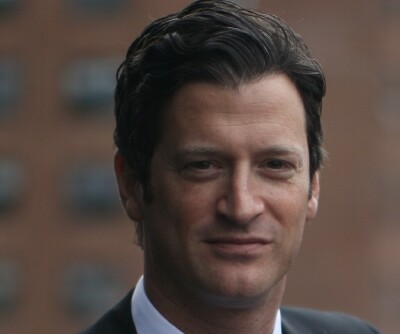The Year of the Right Brain -- Adam Chandler -- Millennial Media

The big job of 2014 is bringing right brain thinking to the math problem of digital ad sales. The business depends on it.
A year ago, I wrote that in 2013 the culling of legacy sales forces would “close the widening gap between client needs and sales capability by forcing digital media to get back to sales fundamentals.”
Turns out I needed a longer horizon line.
The gap actually widened in 2013 as an avalanche of ad tech developments created fundamental changes in how advertisers can reach consumers online. Most notably, the giants of digital bought their way to tech stacks capable of managing all of a client’s marketing.
That’s not going to slow down. Count on bigger, faster change in how advertising gets planned, sold, bought, delivered and measured in 2014. The biggest companies with the most to lose are racing to bring end-to-end solutions to market. They will buy, build and partner faster than buyers and sellers can adjust.
What I got right a year ago was the rising importance of “challenger” salespeople who must sell upstream to bring media into the highest-level corporate strategy conversations. In fact, they’re becoming more important by the day.
Increasingly, clients are dealing directly with DSPs and DMPs, so they don’t need salespeople for access. They need them for translation and orchestration. So challengers now have to be right-brain sellers. The ad business depends on them striking a balance between advertising science and art at the enterprise level, by orchestrating the components of a broader solution.
When a strategic objective like market expansion or customer retention is the end game, and we have real-time targeting to identify an in-market automotive customer in a millisecond, there’s less need to sell in a broad based “sponsorship.” Save that for TV. Instead, there’s a need for artistry. Challengers have to see client marketing possibilities as a mosaic. They need to know what paint to buy and how to illustrate a full-color solution for buyers.
That’s a radically different sales call.
Challengers will take a top-down approach to the biggest companies. They won’t lead only with cool ad units. They’ll be selling the possibilities of large audiences, once considered finite, with data transparency – for example, finding specific customers who bought from a retail store on Black Friday wherever they are in the weeks before Valentine’s Day, or capturing a consumer’s attention when their auto lease is about to expire. Oh, yeah, and without the paperwork.
I like to think of it in music terms. The focus shifts to the ensemble, not the units, because the set list keeps changing. You can see Lenny Kravitz one week in New York and the next in Atlanta, and he’ll perform exactly the same show; whereas if you see Pearl Jam two nights in a row in Brooklyn, the shows will be 80% different. They don’t finish the set list until moments before they take the stage. They adapt to the audience and the moment.
Because many have the same instruments, challengers can’t know all of their competition or see them coming. They have to be able to adapt the show, not just perform it, for a range of audiences that includes internal partners as well as clients. Everyone has to understand what the sales products really do for clients – from market expansion to customer retention – and how they help support.
Challengers are the front end of education, integration and application. There’s never been a greater burden put on a seller of advertising. And here’s the thing – they have to care. I mean really care. Neither giants nor startups are actively teaching salespeople the media landscape, in part because it keeps evolving and everyone’s confronting the changes for the first time. Challengers have to study client, marketplace and media contexts religiously so they know it all cold. Then they can weave together the relevant solutions that make advertising a strategic endeavor.
In the process, they can save ad tech from itself. Advertising that’s all science is like paint without an artist. I don’t count on client CMOs to complete the canvas; they’re overwhelmed by the new technology. I count on the right brains of challengers to turn all the new ingredients into cogent solutions to clients’ real growth obstacles.
As Vice President of Global Programmatic Revenue and Market Development, Adam Chandler brings more than 15 years of digital media and advertising experience to Millennial Media. Previously, Adam served as SVP of Sales at Jumptap, which was acquired by Millennial Media in November 2013. Adam joined Jumptap from the seed-stage VC firm Lerer Ventures, where he served as Executive in Residence. Previously, Adam spent eight years at Yahoo! in a number of executive sales management positions.
Check us out on Facebook at MediaBizBloggers.com
Follow our Twitter updates at @MediaBizBlogger
The opinions and points of view expressed in this commentary are exclusively the views of the author and do not necessarily represent the views of MediaBizBloggers.com management or associated bloggers. MediaBizBloggers is an open thought leadership platform and readers may share their comments and opinions in response to all commentaries.


